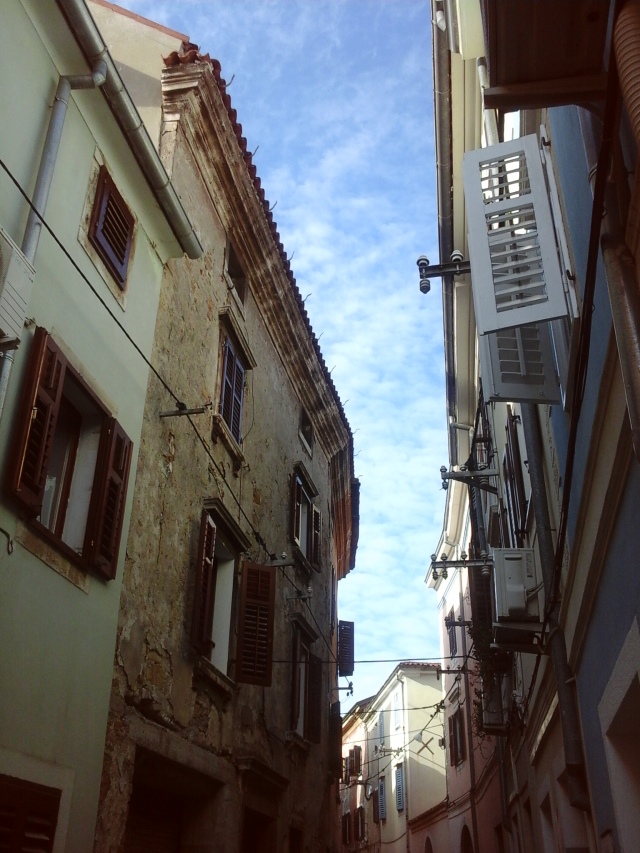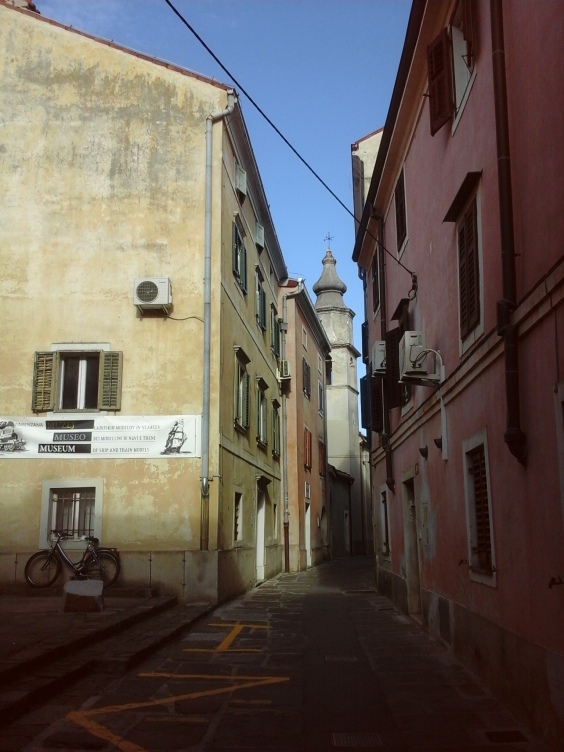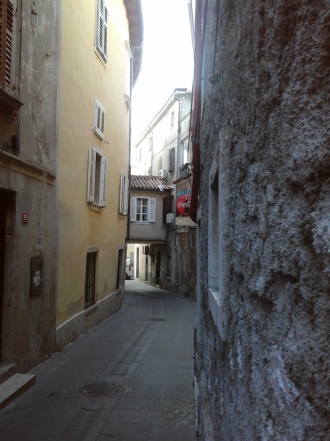- Hinko Smrekar Street

Hinko Smrekar’s Ode to the World War, or Harp of Death
On the other hand, artists were celebrated by Slovenes – dead artists even so to this day. Before Slovenia began using the euro, their currency was the tolar, which included a religious author (he wrote the first two books printed in Slovene and looked a great deal like Vincent Price), a natural historian and author, two painters, an architect, a composer, a poet, and a writer of fiction. That’s a lot of money, leaving out only a mathematician, who was worth fifty tolars. Hinko Smrekar was a poor and unlucky artist born in 1883 in Ljubljana, where he was also shot dead, in 1942 by the occupying Germans. His work is quite varied, largely because he had difficulty earning money for his artworks, so he illustrated books, and was even the first Slovene to decorate tarok cards (tarok is a popular card game with regional variations that may or may not be a corruption of bridge combined with tarot created by drunken Hungarian soldiers on an orgiastic night in a Romanian gypsy town). The image above is Mars, one of many of the world’s gods of war, ‘On his head he has a crown of knives; he is sitting on a bag of money and is singing and playing to crippled human figures. A skeleton (war hero), bearing a laurel wreath, has climbed onto the crosspiece of the harp (coffin): “He is depicted, playing – on the instrument of human passion = a starved skeleton, wrapped in the desire for glory, which is getting an echo from the coffin. The skeleton is decorated with pendants of various awards from holy and secular authorities. A great mass of people are gathered around the monstrous instrument – they are literally crammed in like matchsticks, human money worshippers who are staring, devotedly bowing, sighing from starvation, all engrossed and following the money monster’s every move. They are staring at it with feverish greed in a nervous throb, staring and staring into the sinister cauldron of voices from the coffin and its cadaverously hollow echoes.” (Elko Justin, “Hinko Smrekar in his pictures”, Tovarish, 1948, no. 41) [from Damir Globočnik, writing in: http://www.livesjournal.eu/library/lives6/damgl6/reflection6.htm]
This is a man who deserved a great street and indeed got one.


Smrekar seen from Kristan Sq. Arches and recesses by day
For some time, Smrekarjeva, Hinko Smrekar Street, was my favorite in Izola, and for the simplest of reasons: for the first few years of living in Izola I had no regular place to visit within the old town beyond Ljubljana Street, Manzioli Square, and the beach, which I usually reached by walking along the shore. When I did venture further in, it was usually at night while walking the dogs, random walks in darker lanes, some of surprising length, like Hinko’s street. And I never knew precisely where I was and so never knew where I would emerge, and though the possibility were decidedly undramatic, such as Manzioli Square and Kristan Square, each of these had several streets entering them, and I never recognized where I was before actually entering into the square. As for Smrekar’s Street in particular, there was also the combinaton of the curving street and the irregularity of the buildings that at night made me feel I was negotiating a cubist painting, the buildings closing and opening at the eaves, sudden open spaces revealing ultimately closed spaces or lanes that took me into entirely lost zones. One left turn is still Smrekar Street, opens onto By The Doors Street, yet turn out in its continuation to remain Smrekar Street. One wrong turn and you may be stuck at night in Courtyard Street, seeking in vain that slice between buildings that is the shortcut to Koper Street, yet in the dark of night seems to shift from one corner to another, more elusive as one’s panic rises. Worse, the connection to Courtyard is a two or three meter stretch of street with no name, no entrances, an indefinable space where all I have ever seen is a garbage wagon and various large pieces of refuse piled around it.
 Growing sinister as the sun slides toward the horizon
Growing sinister as the sun slides toward the horizon

Innocent by day

The middle length of Smrekar 
Down Alma Vivode, a concrete onion dome.

A stylish lintel

Behold


The requisite ornamentation of days gone by: on the left un-retouched, on the right recently painted. Note the free mixture of stlyes, even to the point of faux columns.


A final stretch of Smrekar Smrekar ends where the van is parked